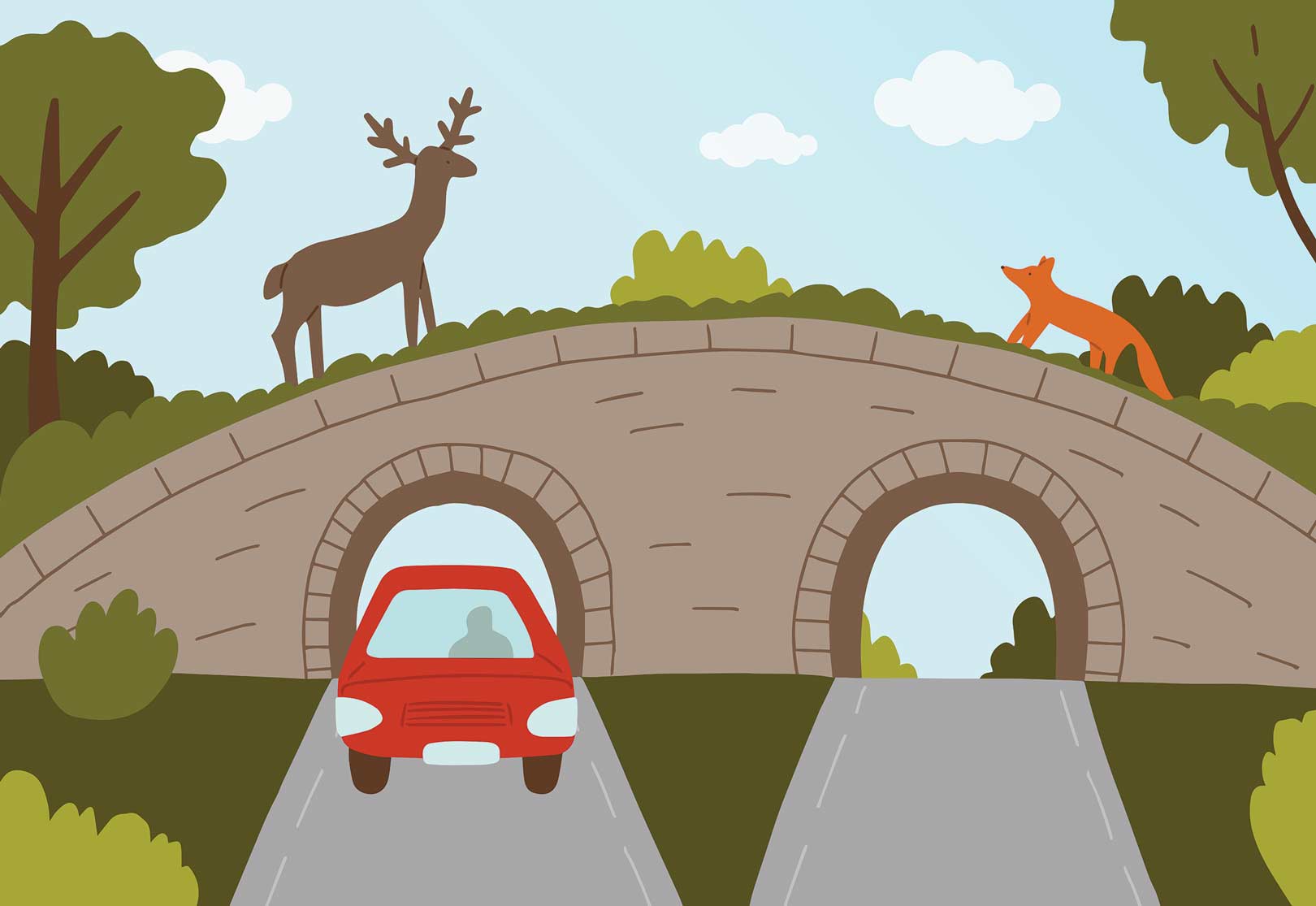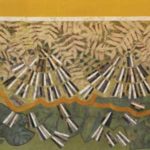
A new generation of highway engineers is planning the expansion of Highway 401 from east of Cobourg to Colborne. Their plans accommodate the needs of local wildlife and the protection of their travel corridors.
Take a look at satellite imagery of Northumberland County and you’ll see its creeks and rivers spread like veins through the neat rectangles of farmland and settled areas, providing life to its natural systems and connecting its patchwork of green wooded areas with vegetated corridors. These are nature’s highways.
The connections these networks enable are crucial for the wellbeing of wildlife. Fish are an obvious beneficiary of these systems, but all manner of wildlife – from insects to amphibians to mammals – depend on them for habitat and the longterm survival and good health of their species. Populations of animals that end up in isolated habitat “islands” – cut off from others of their own kind – typically end up in decline or even disappear.
Incorporating passages for animals into highways used by humans is becoming a more common practice, and Canada leads the way in this initiative.
If you take another look at that map of Northumberland County you’ll note that one of the human population’s key highways – the 401 – runs like an east-west slash through those natural systems. And while the 401 has brought unprecedented mobility and economic benefit to human populations, it contributes to the fragmentation of wildlife habitat and their travel corridors, presenting a near-solid barrier between the lakeshore and the rolling hills to the north.
In discussing this we are acting out a classic case of 2020 hindsight. Seventy-five years ago, when the 401 was being planned and constructed, conservation biology – the field of science which concerns itself with matters such as habitat fragmentation – didn’t even exist as an area of academic study.
Planners would have applied themselves exclusively to human concerns – road safety, efficiency, long-term durability, cost. Given the priorities of the day, streams and rivers running from the cold water aquifer of the Oak Ridges Moraine to Lake Ontario were routed through narrow low culverts underneath the highway which provided passage for fish, but not much else.
Fast forward to today, when we know a lot more about animal habitat needs, and we see help on its way from an unusual source – the proposed widening of Highway 401 from Nagle Road east of Cobourg to Percy Street in Colborne. The project would begin with improving or replacing existing bridges and culverts and prepare for eventual construction of a six-lane highway.
A 2020 planning study for the project identifies 15 watercourses which the highway crosses. All of the watercourses are coldwater streams, and most include fish habitat. The preferred plan for the project lists two of these watercourse crossings – Barnum House Creek and Shelter Valley Creek – as having excellent potential to become “ecopassages.” Culverts currently routing the two creeks under the 401 would be replaced with much higher and wider bridge structures providing room for riparian habitat and enabling larger animals to get from one side of the highway to the other.
Incorporating passages for animals into highways used by humans is becoming a more common practice, with Canada leading the way. Ecopassages in Bruce Peninsula National Park use fences to direct amphibians and small animals safely under roads through small tunnels protected by metal grating. The grating allows sunlight to penetrate through for the benefit of cold-blooded reptiles. Scientists believe the passages will help protect the park’s threatened species including the snapping turtle and the massasauga rattlesnake.
In Banff National Park, a system of six wildlife overpasses and 38 underpasses is credited with reducing wildlife collisions by 80 percent. A 2014 study by Montana State University found the passages helped maintain genetically healthy populations of grizzly bears, which were crossing often enough to ensure genetic mingling among populations from either side of the highway.
Getting wildlife safely from one side of a highway to the other is part of a much bigger picture in which biologists envision wildlife on local, continental, and even transcontinental scales. A highway underpass is one piece of a wildlife corridor, but so is a wide band of trees planted to connect two previously separated forested areas, and so too is the preservation of wetlands along the migration flyways used by waterfowl.
Ecopassages underneath a widened 401 will not mitigate all of its ecological impacts, but they are a start. At this point there’s scant detail on further ecological restoration associated with the project, although the 2020 study refers to looking for opportunities to improve fish habitat and carrying out targeted surveys of wildlife species.
It is still unknown when work might begin on the 18-kilometre section between Cobourg and Colborne. In this year’s budget, before Premier Doug Ford’s re-election, the Province of Ontario pledged $25.1 billion over ten years for road building, including the widening of Highway 401 east of Oshawa. Let’s hope the process is quicker, rather than longer. There’s wildlife waiting to get across that highway.
Story by:
Norm Wagenaar




